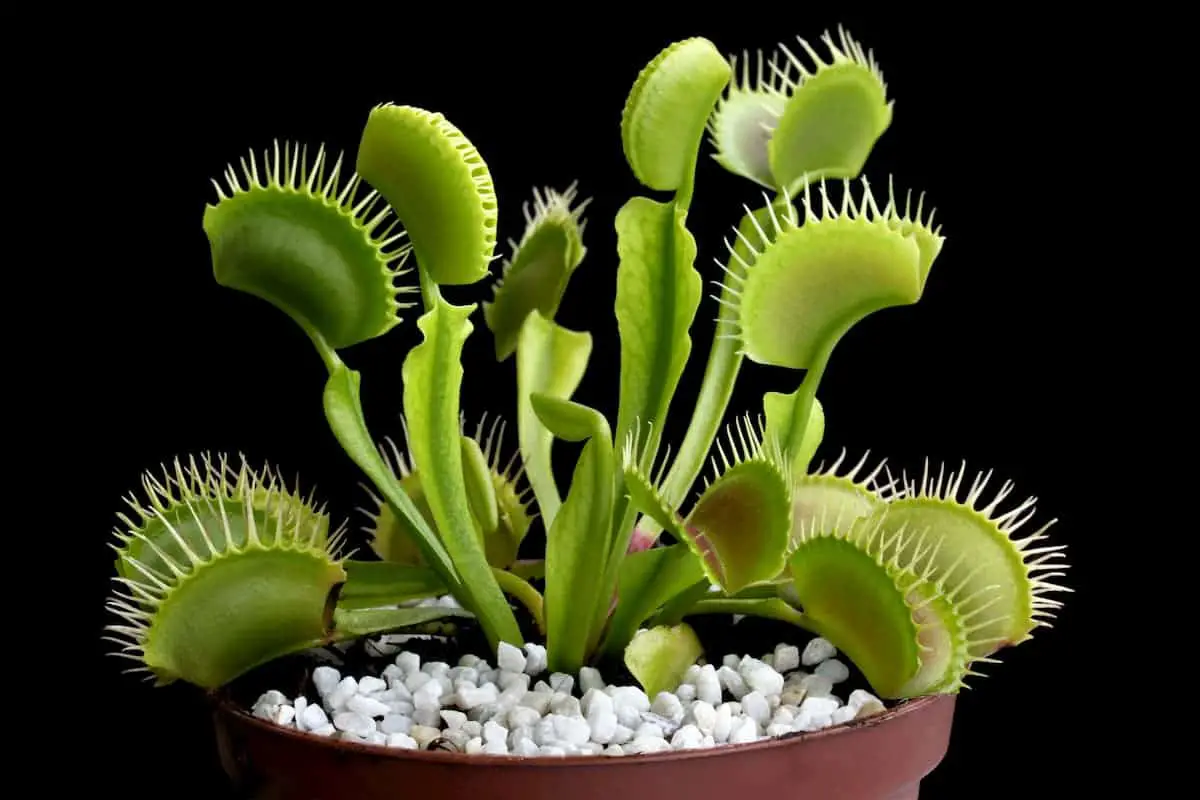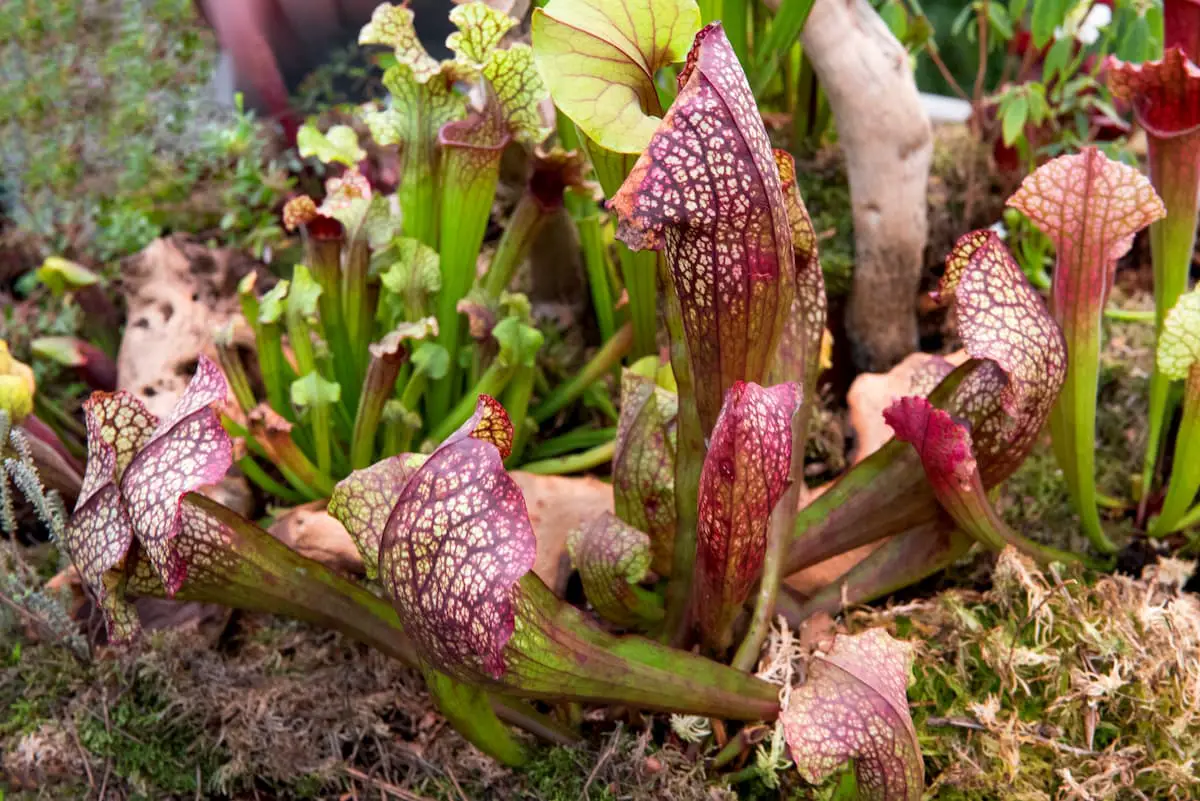There is little more interesting and uniquely beautiful than a carnivorous plant when it comes to house plants.
The most known of these plants is the Venus Flytraps, known for their distinctive flat toothed traps that snap around pretty and allow them to “eat” flies and other insects that make the unfortunate mistake of getting too close.
They’re among a very short list of plants even capable of the rapid movement required to trap their prey, and their method of attracting insects through their sweet smell has given them household notoriety for their unique beauty. This does lead to the question, though, are venus flytraps good house plants?
Just like with any plant, a Venus Flytrap can be a good house plant if you know how to care for them properly. These plants are unlike many of the common household plants for a handful of reasons, but their diet is one of the most obvious. They should be kept in an area where they can adequately hunt for their prey of flies and other small insects and don’t need fertilizer to keep them healthy. They shouldn’t be given fertilizer at all while they’re potted in your home.
Instead, they should be kept in a 1:1 mixture of peat moss and horticultural sand or gravel. This mixture should be constantly moist, but always with distilled water and not tap water.
To keep your plant healthy indoors it should be kept on a terrarium or at least a plastic pot with good drainage. The plant’s water should be distilled or filtered as all carnivorous plants are notoriously sensitive to chemicals, and general contaminants to their water supply.
These directions are often quite different from other house plants that are a little less particular then the venus flytrap can be.
Moreover, they thrive more in environments where they can feed themselves and have 12 hours of sunlight. Generally, if you have a balcony or a patio, the plant will be able to feed itself and eliminate the need to buy or give them flash frozen flies.
The 12 hours of indirect but bright sunlight is just the recommended amount of direct sunlight they need to thrive and be healthy as they can be.
Venus flytraps and other carnivorous plants thrive in better indirect and bright sunny areas like outdoor patios, balconies, or a southern facing window is the best place for your plant.
They also go dormant in the winter months, and at that time, they should be moved to a cooler area and need less water to keep them healthy.
Is it Hard to Feed Venus Flytraps
Feeding Venus flytrap is one of the most different and yet fascinating things about having one as a houseplant. Instead of only drinking water, and getting nutrients from its fertilizer like the common houseplant, venus flytraps also eat small bugs, as their name suggests, they often make a diet of flies and similar insects.
Venus flytraps have adapted to surviving and thriving in areas with very few contaminants and minerals within their soil and water supply, which is what helped lead them to need to substitute these nutrients with insects.
As discussed, peat moss and horticultural sand can be mixed to make good potting soil for the flytrap to be in. This mixture is recommended because you just want to avoid soils that are mixed with contaminants, dust, silt, clay, and other minerals that would be harmful to your plant’s life.
Not all carnivorous plants need the same mixture ratio, but Venus Fly Traps thrive in 1:1 mixtures of the two, or with slightly more sand than peat moss.
Feeding your flytrap with fertilizer is strongly not advised as they should already be getting enough nutrients through their hunting of flies and other insects.
Fertilizer is better suited for other house plants because they don’t have any capability of feeding themselves. If you are not willing to feed your flytrap insects if they’re struggling to hunt on their own, you should not get a venus flytrap.
Fertilizer cannot be used to replace what they eat through hunting flies and other insects. They make good houseplants for people who are willing to keep an eye on and help them feed on insects.
You should also not be feeding your venus flytrap raw meat or cheese, these can be too big for them, and their diet is better suited for flies. Food that is too large for them to handle properly can cause them to die as well.
As such, you should never try to give them food that isn’t outlined in their specific diet as they weren’t made to eat those items and will not be able to handle them.
Additionally, demonstrating your plant’s ability to eat and hunt flies and other bugs is okay, but you should not overdo it.
It is possible to overfeed a flytrap, and they should already be able to hunt on their own in the environment you placed them so they shouldn’t need your help too frequently as is.
The only time you should be “feeding” them insects is if you’re worried they are not getting enough in your home for whatever reason, then you can try to “feed” them with tweezers carefully.
Don’t Tease Carnivorous Plants
You should never try to provoke your flytrap, or any carnivorous plant, to close or “bite” you. Flytraps do have a limit to how many times their traps can “snap” shut before they stop being able to.
By teasing the plant to have them snap on your fingers, they could end up struggling to hunt for their own food as their traps are not functioning well anymore or have reached their limit.
If your household has small children, you may want to wait until they’re older. The plant will not be able to hurt them much, but the child’s curiosity could harm your flytrap’s ability to hunt, thus helping to kill them essentially.
So long as you don’t have guests provoking this or curious children constantly poking at their traps, your plant should be fine and avoid this outcome. Otherwise, you may want to keep them up out of arm’s reach to keep the plant safe and out of harm’s way.
Dormancy
Venus flytraps go dormant in the colder months, meaning that they need less to survive. They appear dead in these periods, but really they’re just resting for the next warm period.
Essentially, for the months of winter, your plant will need less attention to survive, and when the spring equinox comes back around, they’ll begin to “wake up” in the warmer temperature and light.
Never freeze the plant to keep them alive; instead, just move them to a cool, anywhere between 35 and 50 degrees Fahrenheit. If you freeze them, you will likely just kill the plant, and the glass of the terrarium could break.
Dead Leaves
Outside of their dormancy period, if you find that your flytrap has dead appendages, you should carefully cut them off. Trimming them off, if done correctly, can serve to help them grow back stronger and healthier.
There are a lot of reasons that your plant could be dying in places, though, so you should always keep an eye on the environment that your plant is in and make sure that there is no reason that your plant is dying if you’re worried.
Otherwise, just cut off the dead leaves only where the tissue has begun to blacken and show signs of dying. You shouldn’t be cutting them off in places that they’re still green and alive, as that will just harm the plant.
Essentially, as long as you’re able and willing to keep close, careful eyes on your flytrap, they can make incredible houseplants.
Final Thoughts on Venus Flytraps as House Plants
Having a Venus Flytrap as a house plant is interesting as it can help you cut down on insects inside your house as we all know it happens. This would cut down on chemical insect killers and allow you to have a house free of flies and similar.
Additionally, on a carnivorous plant you have very little time that you must spend keeping the plant alive, if you have a black thumb this may be a good match for you as you don’t need to feed it constantly, etc.



Leave a Reply